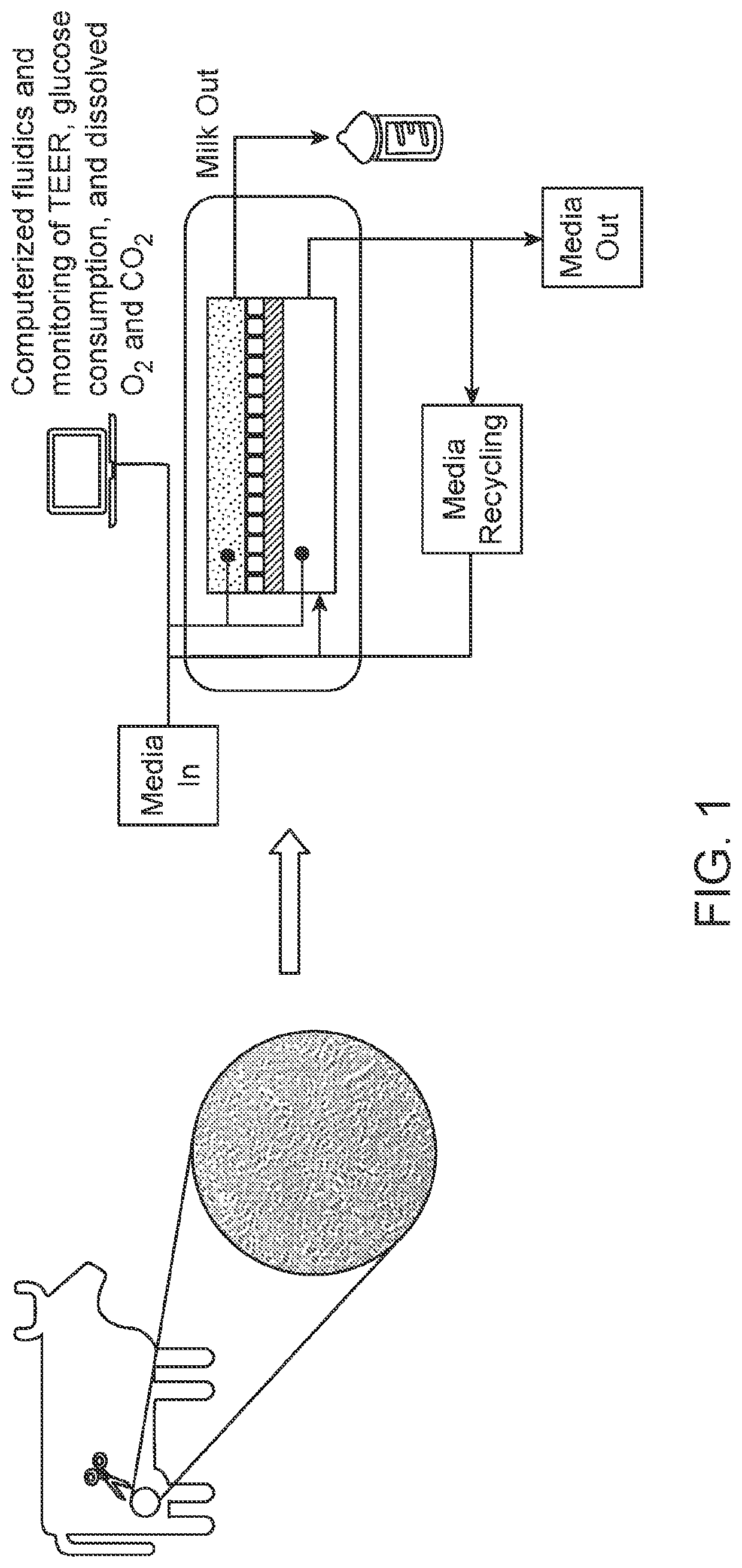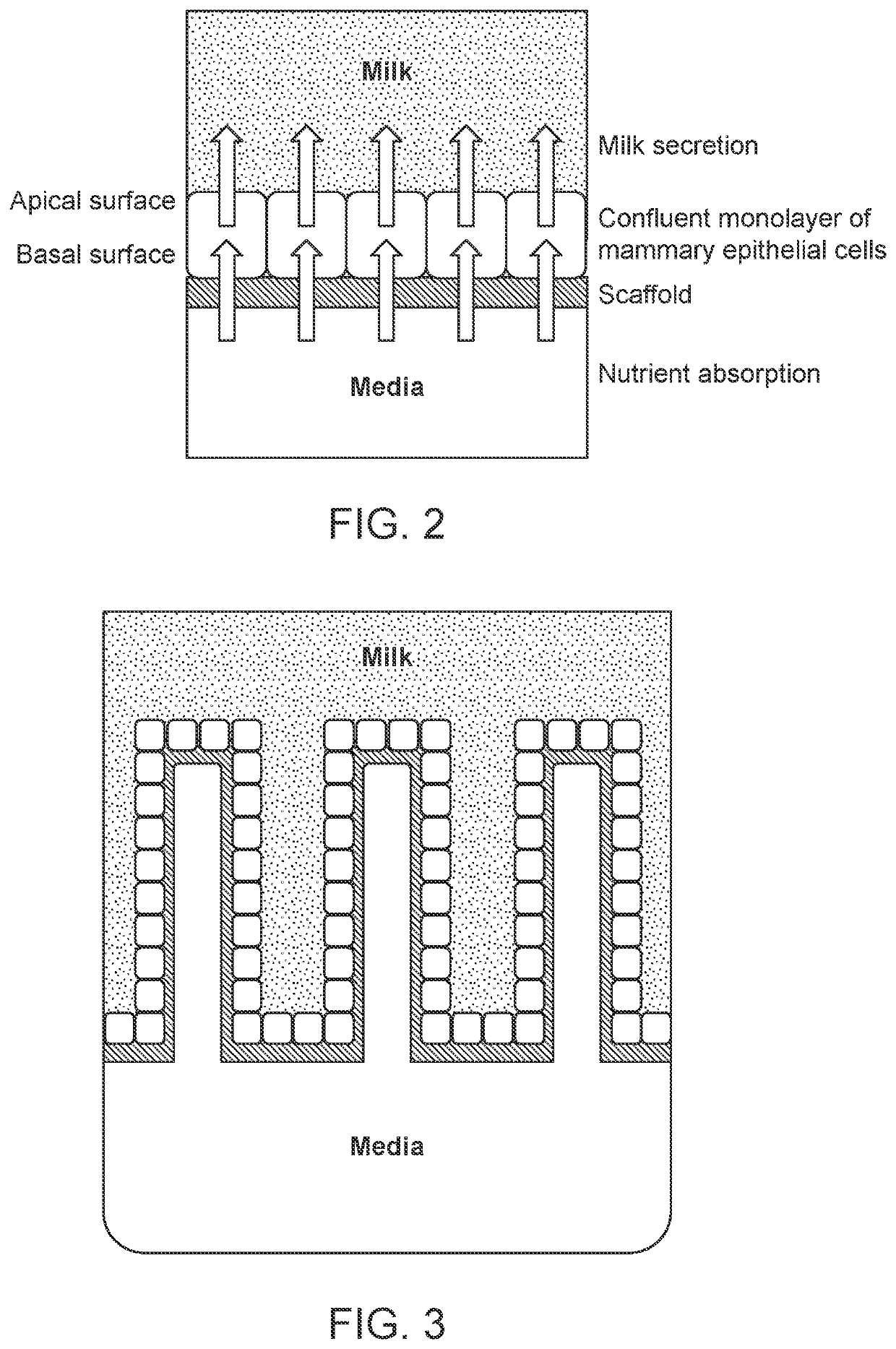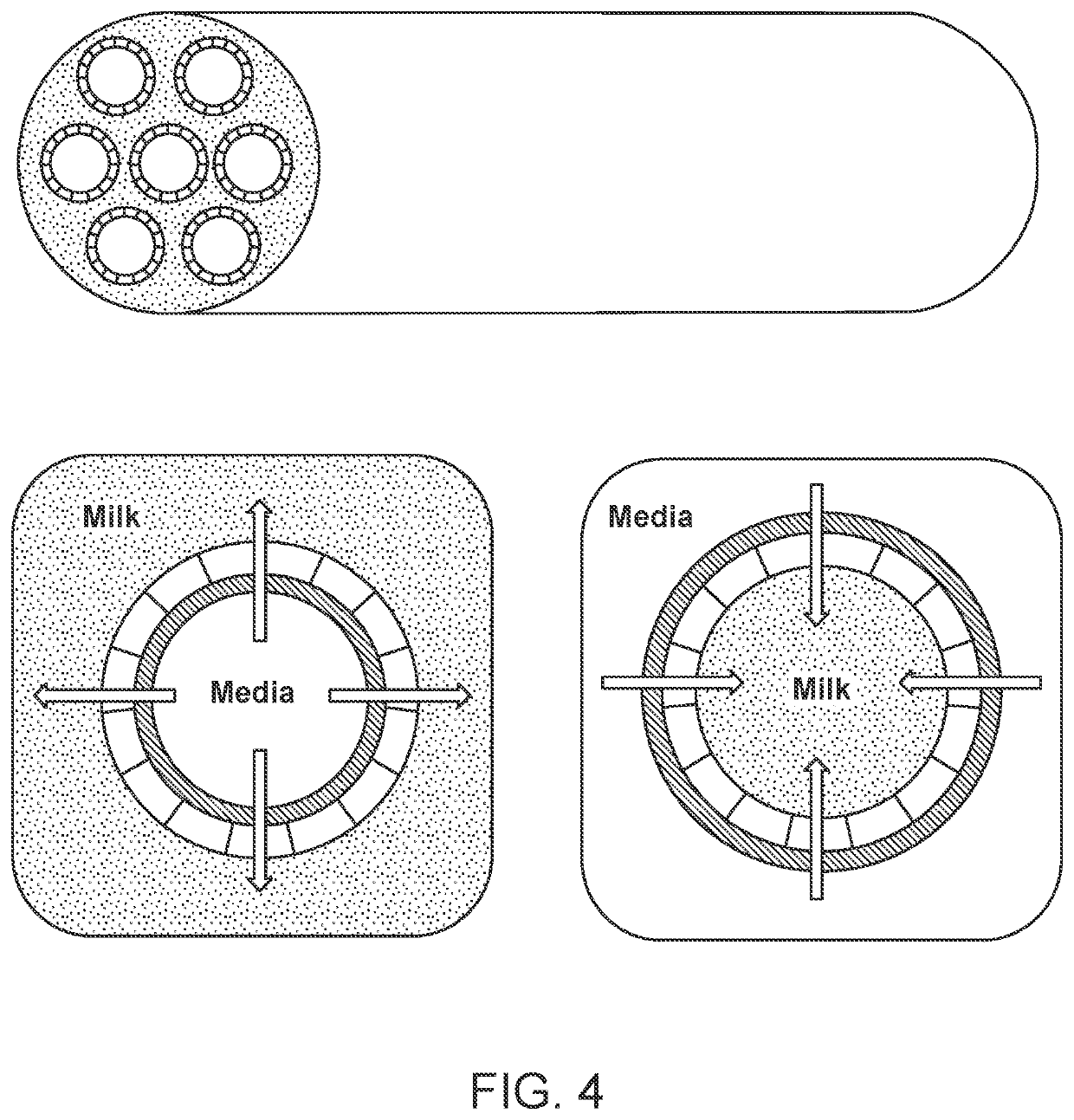Live cell constructs for production of cultured milk product and methods using the same
a technology of live cell and milk product, which is applied in the field of live cell constructs for production of cultured milk product and methods using the same, can solve the problem of not being able to reproduce the full molecular profile of milk or dairy, and achieve the effect of increasing the rate of nutrient uptak
- Summary
- Abstract
- Description
- Claims
- Application Information
AI Technical Summary
Benefits of technology
Problems solved by technology
Method used
Image
Examples
example 1
[0136]A cell culture system designed for the collection of milk should support compartmentalized secretion of the product such that the milk is not exposed to the media that provides nutrients to the cells. In the body, milk-producing epithelial cells line the interior surface of the mammary gland as a continuous monolayer. The monolayer is oriented such that the basal surface is attached to an underlying basement membrane, while milk is secreted from the apical surface and stored in the luminal compartment of the gland, or alveolus, until it is removed during milking or feeding. Tight junctions along the lateral surfaces of the cells ensure a barrier between the underlying tissues and the milk located in the alveolar compartment. Therefore, in vivo, the tissue of the mammary gland is arranged such that milk secretion is compartmentalized, with the mammary epithelial cells themselves establishing the interface and maintaining the directional absorption of nutrients and secretion of ...
PUM
| Property | Measurement | Unit |
|---|---|---|
| total surface area | aaaaa | aaaaa |
| temperature | aaaaa | aaaaa |
| temperature | aaaaa | aaaaa |
Abstract
Description
Claims
Application Information
 Login to View More
Login to View More - R&D
- Intellectual Property
- Life Sciences
- Materials
- Tech Scout
- Unparalleled Data Quality
- Higher Quality Content
- 60% Fewer Hallucinations
Browse by: Latest US Patents, China's latest patents, Technical Efficacy Thesaurus, Application Domain, Technology Topic, Popular Technical Reports.
© 2025 PatSnap. All rights reserved.Legal|Privacy policy|Modern Slavery Act Transparency Statement|Sitemap|About US| Contact US: help@patsnap.com



